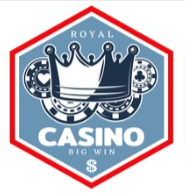Card counting in Blackjack has long been portrayed as a secret weapon for players who want to beat the house. From 21 to Rain Man, popular culture makes it look effortless. But the reality is quite different. While counting cards is a legal and effective strategy, it demands concentration, precision, and hours of practice to play online casinos. This guide breaks down how card counting works, its logic, and how you can learn this technique to improve your Blackjack edge.
What Is Card Counting in Blackjack?
Let’s bust the first myth: card counting is not memorizing cards. It’s about keeping a mental tally of high and low cards dealt to predict what remains in the deck. This lets players bet more when the odds shift in their favour.
Why high cards matter:
Cards like 10s, Jacks, Queens, Kings, and Aces benefit the player. They increase the chances of hitting a blackjack and also raise the likelihood that the dealer will bust.
Why low cards help the dealer:
Small cards (2–6) make it easier for the dealer to draw safely to 17 or higher without busting. Fewer high cards also reduce your chance of strong hands.
Card counting isn’t a trick—it’s a way to make smarter bets.
How Does Card Counting Work?
Most systems follow a basic Hi-Lo method. Each card is assigned a value:
| Card Rank | Count Value |
|---|---|
| 2 – 6 (Low cards) | +1 |
| 7 – 9 (Neutral) | 0 |
| 10 – A (High) | -1 |
As each card is dealt, you update your running count.
Example:
- You’re dealt 10-K ➝ two high cards = -2
- Dealer gets 9-Q ➝ one middle, one high = 0 and -1
- Running count = -3
The higher the running count, the more high cards remain in the deck. That’s your advantage.
Running Count vs. True Count
In single-deck games, the running count is usually enough. But in multi-deck Blackjack, you need to convert the running count into a true count.
True Count formula:
True Count = Running Count ÷ Estimated Decks Remaining
Why this matters: Betting decisions based on the true count give a better edge. A running count of +6 sounds great—until you realize you’re 4 decks deep. Then it’s just +1.5 per deck, which isn’t as strong.
When to Increase Bets
- Positive Count (e.g. +3 or higher):
Start raising your bets. The deck is rich in high cards, improving your chances of blackjack and the dealer busting. - Neutral or Negative Count (0 or below):
Keep bets low. It’s riskier and the edge is with the house.
Your bet size should follow the count—this is how you profit from the edge. But do it subtly. Casinos watch for it.
Practice Makes Perfect
Start at home. Take a single deck and flip cards one by one, keeping count. At the end of the deck, the count should be 0. If not, you made a mistake.
Repeat until you can track cards in under 30 seconds with full accuracy.
Then, practice two at a time. In real games, cards are dealt fast. You’ll need to recognize and add the counts almost instantly.
Tip: Use free Blackjack simulators online with speed settings to sharpen your reactions.
Obstacles You’ll Face in Casinos
Casinos don’t like advantage players—and card counters are definitely that. While card counting is not illegal, casinos have the right to refuse service.
Common countermeasures include:
- Frequent shuffling to reset the count
- Automatic shufflers that eliminate deck tracking
- Heat from pit bosses if your bet sizes change too obviously
- Multiple decks to dilute your edge
Even distraction tactics—loud music, servers, and table banter—are part of the defence.
Can You Count Cards Online?
In short: No.
Online Blackjack uses Random Number Generators (RNGs) to shuffle decks after every hand. This makes counting pointless.
Exception:
Some live dealer Blackjack games online simulate a real shoe and deal multiple hands before reshuffling. In these, you might apply card counting, but the reshuffle often comes early, neutralizing your edge.
Is Card Counting Worth It?
Let’s be honest. Card counting won’t make you rich overnight. But it can reduce the house edge to near zero—or even flip it slightly in your favour.
What you need:
- Patience and practice
- Bankroll discipline
- The ability to remain unnoticed
- Calm under pressure
If you treat it like a skill—not a get-rich scheme—it becomes a smart way to play.
Final Thoughts: Counting Cards Like a Pro
Card counting in Blackjack is not magic—it’s math. Done right, it offers players a rare edge in casino games. But that edge comes at a cost: focus, hours of practice, and knowing when to walk away.
It’s a long game, and not everyone is cut out for it. But if you’re ready to treat Blackjack like a sport of the mind, not just a game of chance, card counting is a skill worth learning.
Just remember: the house doesn’t like to lose. So stay sharp, stay subtle, and most of all—enjoy the challenge.

